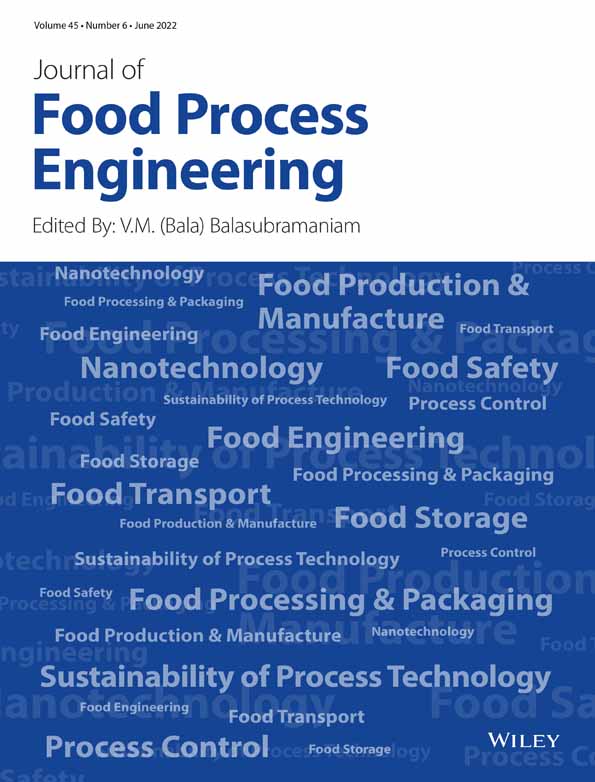Physical characterization and mass modeling of traditionally Popped Makhana (Euryale ferox Salisbury) variety: Sabour-1 Makhana
Abstract
Correlation between physical properties of Popped Makhana (variety: Sabour-1 Makhana) such as tri-axial dimensions, spatial diameters, projected areas, volumes and mass may aid in predicting pops quality besides fabrication of post-harvest machinery. Hence, the present work aims to predict the mass of Makhana pops as a function of its physical attributes using nonlinear mathematical models. Depending upon high variation in mass data (0.19–0.46 g), pops were categorized into small, medium and large groups presented with suitable mass models. The medium mass group (MMG) was found dominating since 70% of the overall selected samples belonged to this group approaching ellipsoid. Quadratic model was recommended to predict mass for MMG based on tri-axial dimension thickness (T), R2 = 0.806; spatial diameter (Dg), R2 = 0.898; projected area (PT2), R2 = 0.873; and ellipsoidal volume (Vellip), R2 = 0.895, respectively. Further investigation comprised of various physical, aerodynamic, gravimetric, frictional, color, and mechanical properties. The mean surface area, true volume, and bulk porosity of pops were 881.37 mm2, 2,446.96 mm3, and 25.49%, respectively. The sphericity, aspect ratio, elongation, and flakiness ratio were determined as 0.85, 0.90, 1.12, and 0.79, respectively. Terminal velocity for pops and its associated drag force were obtained as 6.82 ms−1 and 3.12 × 10−5 N, respectively. Galvanized aluminium sheet offered both lower angle of inclination and coefficient of static friction (11.53°, 0.20). L* (64.39) and whiteness index (59.95) values indicated “opaque white” tone. For lower measure of cohesiveness (0.38) and resilience (0.14), higher gumminess (21.80) was obtained along with bowl-life texture.
Practical Applications
Popped Makhana is a light, voluminous, traditionally expanded pseudocereal consumed as breakfast cereal or roasted snack. It involves labor intensive manual grading, bag filling, weighing, packaging in various sizes, etc., resisting its consumer acceptability, export promotion and domestic consumption as well. Appropriate grading could be efficiently achieved by mass modeling tool, establishing the relation between physical quantities and mass. Mass based grading is economically superior than size grading, slashing grading time, packaging and material handling costs. Mass based mathematical modeling optimizes packaging formations and reduces volume for low transportation cost to distance places for product development. The assessment of projected area for mass prognosis outlines usage of single camera as the vital part of grading system, ensuring economic feasibility. Thus, research was inducted to investigate mass modeling of Popped Makhana based on the selected engineering attributes to develop an automatic grading system based on combined approach of mass and size.
Open Research
DATA AVAILABILITY STATEMENT
Data available on request from the authors.




